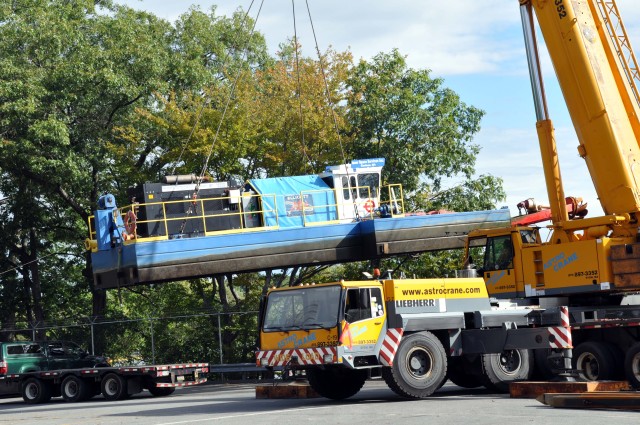The Environmental Protection Agency recently recognized the Natick Soldier Systems Center for its efforts in cleaning up three PCB hot spots from the Pegan Cove area of Lake Cochituate in Natick, Mass. The PCBs had discharged through storm drains and into the lake after a 1985 transformer rupture at NSSC.
In a May 4 letter to John McHugh of the Natick Environmental, Safety and Health Office, Mary Sanderson, chief of EPA's Remediation and Restoration II Branch, said that NSSC had successfully completed the cleanup.
"The Army should be commended for the expeditious completion of this significant project and the effort to incorporate green remediation principles into the sediment cleanup work," Sanderson wrote.
NSSC had approximately1,214 tons of sediment from the cove dredged, backfilled the three hot spots with clean sand, and had contaminated sediment taken to an off-post disposal site last year. In her letter, Sanderson noted that the "sediment remedy achieved site background conditions."
Before he relinquished command of NSSC May 10, Brig. Gen. Harold J. Greene spoke about the successful cleanup effort.
"I'm thrilled about that, because I think we need to take it very seriously, our responsibility to make the best use of the resources we have in this country," Greene said. "We've worked diligently since 1985 on getting the resources and putting in place the proper remediation plan.
"We had a challenge in 1985, but now we'd like to think we've made good on it and that we'll continue to keep the processes and procedures in place ... We leave it better than we found it for those that follow."
McHugh, the installation environmental officer, said that credit for the successful $2.88-million cleanup completed last fall should go to the Army, the garrison, the Town of Natick, the Massachusetts Department of Environmental Protection, the Massachusetts Department of Conservation and Recreation, the EPA and the local Restoration Advisory Board.
"It was a cooperative solution that involved compromise by everybody," McHugh said. "Each one of those parties compromised a bit. It's the way that good government should work, and it resulted with a cost-effective cleanup action here that was done according to what was budgeted. It was done under budget, too."
As McHugh pointed out, the cove cleanup was designed to minimize energy use, maximize renewable fuel use, minimize air emissions and greenhouse gas generation, and minimize impacts to water resources.
"We did use a lot of green remediation techniques," McHugh said. "We were reusing water such that we minimized our consumption of energy and we minimized any use of hazardous chemicals, and we used as much local resources as we could."


Social Sharing